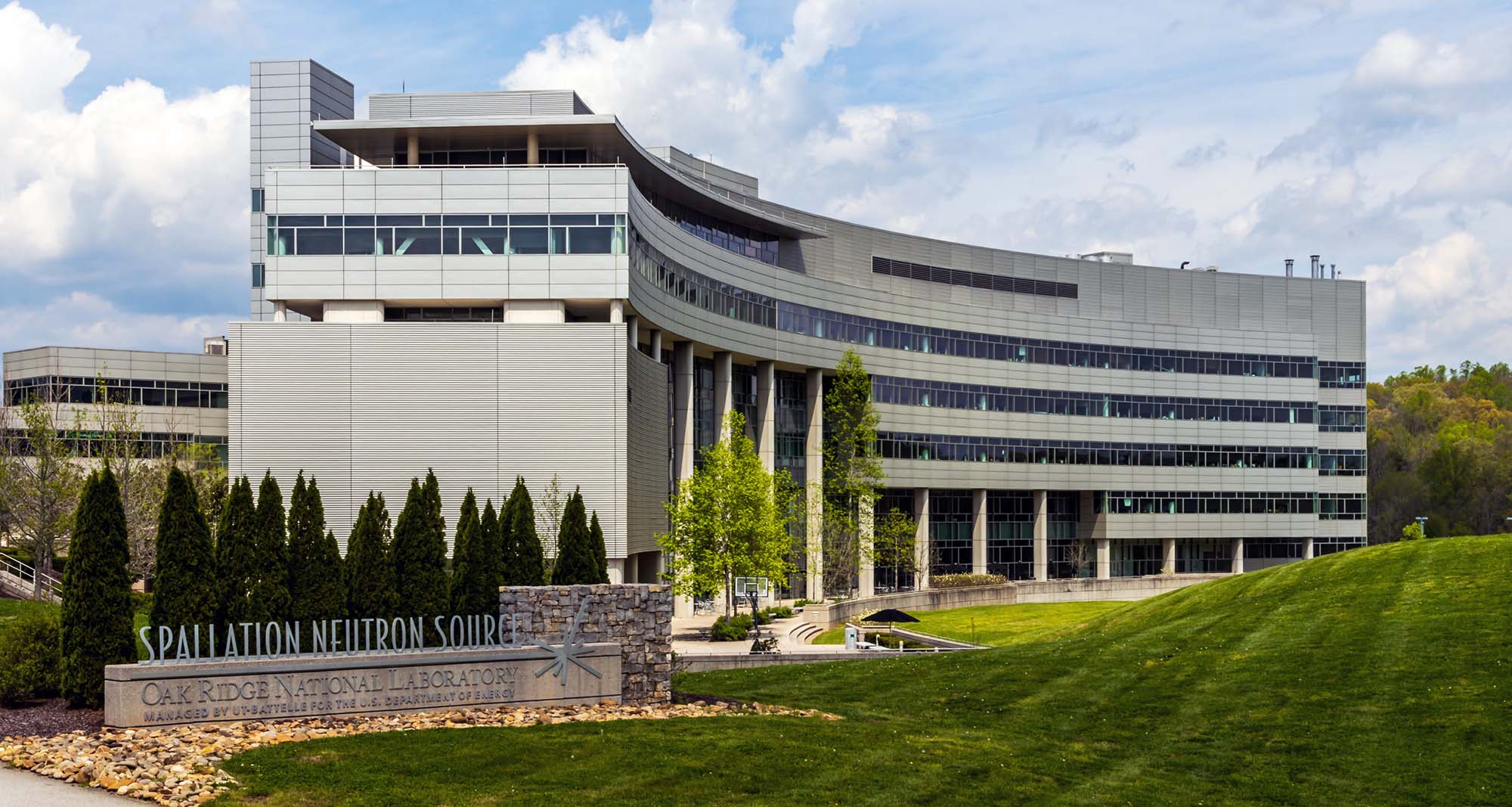UT is a national leader in advanced energy research and prizes its relationships with the US Department of Energy’s national labs.

UT-Oak Ridge National Laboratory Partnership

UT and Oak Ridge National Laboratory share a special partnership dating back to World War II, when the university’s proximity to ORNL and the lab’s need for scientists resulted in a natural bond. The resulting revolution has transformed the Knoxville–Oak Ridge corridor into Innovation Valley, transforming the economic profile of the region.
UT-Battelle, a 50-50 partnership between UT and Battelle Memorial Institute, is responsible for managing and operating ORNL, the largest science and energy lab in the Department of Energy system.
Collaborations between UT and ORNL focus on shared areas of expertise in materials and manufacturing, nuclear science and engineering, neutron science, bioenergy, high-energy physics, high-performance computing and AI, systems biology, and national security.
More than 80 researchers have joint appointments as UT faculty and ORNL scientists, including the UT–ORNL Governor’s Chairs, a program that attracts top researchers from around the world. Of the 14 Governor’s Chairs, more than 10 hold appointments at UT. Hundreds of UT graduate students annually conduct research at ORNL or in collaboration with ORNL research teams.
ORNL’s facilities include several supercomputers ranked by the TOP500 among the world’s most powerful. The lab is a leading neutron and nuclear power research facility that includes the Spallation Neutron Source, the High Flux Isotope Reactor, and the Center for Nanophase Materials Sciences. The UT–ORNL Shull Wollan Center is located at the SNS facility.
Read about UT and ORNL’s joint contributions through the yearsUT–Oak Ridge Innovation Institute
In 2021 UT and ORNL launched the UT–Oak Ridge Innovation Institute to align the expertise, infrastructure, and collaborative opportunities of both organizations. UT–ORII supports world-class discovery and innovation, graduate education, and workforce development initiatives for Tennessee and beyond. Convergent research initiatives are focused on clean manufacturing and advanced materials as well as energy storage and transportation.
Visit UT–ORIIHighlighted National Laboratories and Projects
In 2022, UT faculty served as principal investigators on nearly 300 funded research projects spanning 16 of the 17 national labs.
Ames conducts research primarily in condensed matter physics and materials science, chemical and molecular science, and applied materials science and engineering. Recent UT–Ames projects focus on computational chemistry methods for high-performance computing, the mechanical behavior and characteristics of aluminum-cerium alloys, and creating a framework for more efficiently and economically manufacturing composite materials for harsh environments.
ANL is a multidisciplinary science and engineering research lab focused on basic and applied research in energy storage, green energy, and nuclear energy. In 2020 Argonne was awarded leadership of the Q-NEXT consortium, identifying it as a major player in the nation’s quantum efforts. Recent UT–ANL projects focus on better understanding the nation’s power grid as it modernizes as well as increasing the productivity of ANL’s high-performance computers.
LANL has a research portfolio spanning nuclear security, intelligence, defense, emergency response, nonproliferation, counterterrorism, energy security, emerging threats, and environmental management. Recent UT–LANL projects include studying the thermodynamic properties of materials, the separation and recovery of rare earth elements, mathematical physics, developing neutron spectroscopy software, the portability of high-performance computing for exascale applications, and computational modeling for nuclear energy applications.
NREL transforms energy through the research, development, commercialization, and deployment of renewable energy and energy efficiency technologies. Recent UT–NREL projects focus on cyber–physical dynamic system modeling for energy storage and use, determining approaches to better control renewable energy integration into hybrid power plants, and improving large-scale power grids.
LBNL conducts research across a wide range of scientific disciplines that are divided into six main areas: integrated fundamental energy science, integrative biological and environmental system science, advanced computing for scientific impact, the fundamental properties of matter and energy, accelerators for the future, and energy technology innovations for a sustainable future. Recent UT–LBNL projects focus on low-power methods for radiological and nuclear detection and mapping and studying subsurface microbiomes within the contaminated Bear Creek aquifer at the Oak Ridge Reservation in Tennessee.
SNL focuses on national and global security, energy, and technology innovation. UT–SNL projects focus on programming models for next-generation high-performance computing platforms, electrochemistry, developing extreme-scale scientific software for the Exascale Computing Project, studying analytics for neural network workflows, and cybersecurity research for advanced reactors.